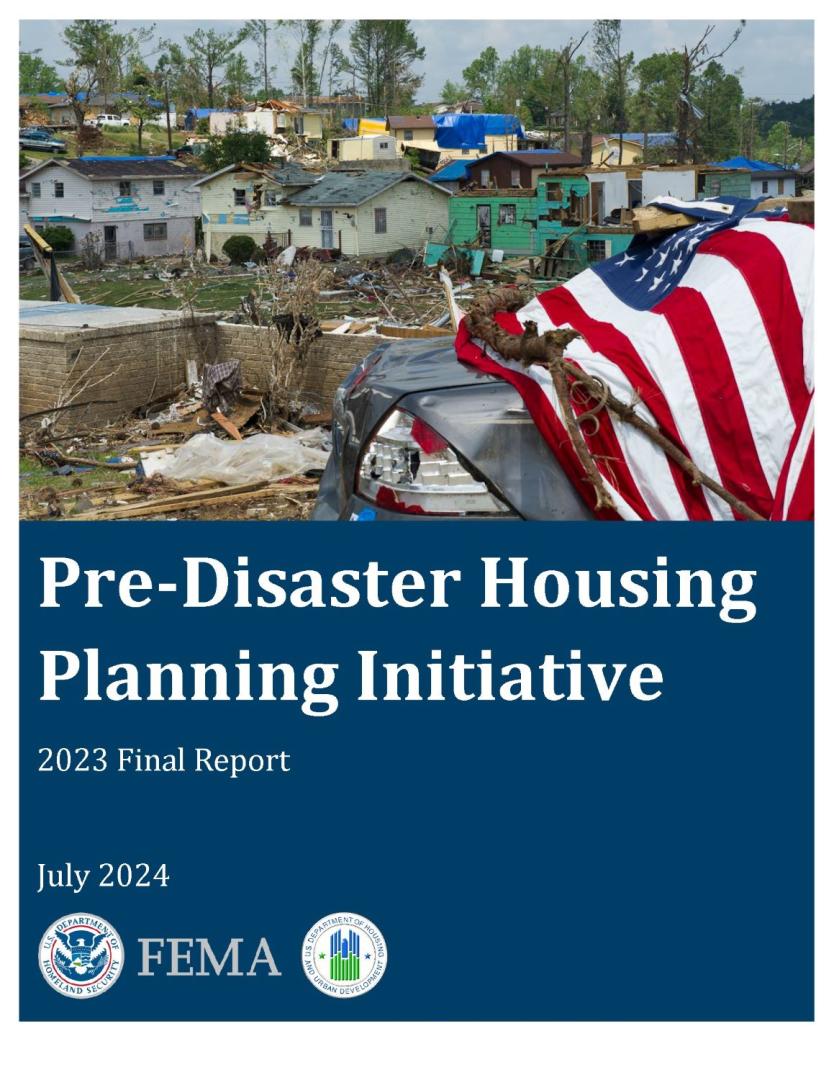Planning Considerations
Comprehensive Guides
Houses of Worship & Schools
Pre-Disaster Recovery
Other Resources
Accomplished properly, planning provides a methodical way to engage the whole community in thinking through the lifecycle of a potential crisis, determining required capabilities and establishing a framework for roles and responsibilities. It shapes how a community envisions and shares a desired outcome, selects effective ways to achieve it and communicates expected results.
A shared planning community increases the likelihood of integration and synchronization, makes planning cycles more efficient and effective and makes plan maintenance easier.
We have resources to guide the way.

Have questions? Email the National Integration Center.
Planning Considerations
Identifies relevant concepts, considerations, and principles that can inform jurisdictions in planning for evacuation and/or shelter-in-place protective actions. The research report Improving Public Messaging for Evacuation and Shelter-in-Place and its companion slide library documents findings from peer-reviewed research and presents recommendations for informing community members about risk and providing effective warnings.
The Shelter-in-Place Pictogram Guidance provides the public clear protective action guidance for 10 hazards and three building types. The guidance includes recommended interior locations by hazard, additional protective actions, and duration. Social media friendly versions are available to provide clear protective action guidance regardless of platform.
Identifies concepts and principles relevant to the development of related plans and the completion of a THIRA.
Provides emergency managers with recommendations and best practices on how to analyze local supply chains and work with the private sector to enhance supply chain resilience using a five-phased approach.
Provides officials with information and resources on hazardous materials, incident preparedness and response and practices to increase community resilience to those incidents.
Developed in coordination with the Cybersecurity and Infrastructure Security Agency (CISA), “Planning Considerations for Cyber Incidents: Guidance for Emergency Managers Guide” provides state, local, tribal, and territorial emergency managers with foundational knowledge of cyber incidents to increase cyber preparedness efforts in their jurisdictions. This guide is intended to help emergency management personnel collaboratively prepare for a cyber incident and support the development of a cyber incident response plan or annex. Download the Overview document and Critical Cyber Asset Identification & Prioritization Checklist. View the short video outlining the important roles emergency managers have in planning for cyber incidents impacting their communities through the identification and prioritization of critical services and dependencies.
Distribution Management Plans enable SLTT partners to strengthen capabilities before a disaster to enhance capacities to distribute resources to survivors after a disaster. FEMA. Effective 2019, all Emergency Management Performance Grant (EMPG) recipients are required to develop and maintain a Distribution Management Plan as an annex to their Emergency Operations Plan. View the frequently asked questions.
Provides jurisdictions, utility owners/operators, and healthcare facilities with information and resources to improve resilience to power outages, integrate plans, and prioritize assistance during an outage.
Comprehensive Preparedness Guides (CPG)
CPG 201 provides guidance for conducting a Threat and Hazard Identification and Risk Assessment (THIRA) and Stakeholder Preparedness Review (SPR).
CPG 502 outlines the information-sharing roles of fusion centers and emergency operations centers and identifies planning and coordination considerations each entity.
Emergency Operation Plans – Houses of Worship and Schools
Guide on emergency operations planning, discussing actions that may be taken before, during and after an incident to reduce the impact on property and loss of life. It encourages houses of worship to develop an emergency operations plan.
This guide outlines principles of emergency management planning for institutions of higher education, provides a process for the development of emergency operations plans and describes the content with those plans.
This guide provides recommendations in the development of plans not only to respond to an emergency, but also outlines how schools (K-12) can plan for preventing, protecting against, mitigating the impact of and recovering from these emergencies.
Pre-Disaster Recovery Planning Guides
This guide prepares tribal governments for recovery efforts from future disasters by engaging with the whole community and planning for recovery activities that are comprehensive and long term.
This guide helps states and territories prepare for recovery by developing pre-disaster recovery plans that follow a process to engage members of the whole community, develop recovery capabilities across government and nongovernmental partners and create an organizational framework for comprehensive recovery efforts.
This guide is designed to help local governments prepare for recovery from future disasters offering tools for public engagement, whole-community recovery, identification of existing recovery resources, and identifying outside partnerships that can help local governments build resilience.
FEMA in partnership with the U.S. Department of Urban Housing and Development (HUD) published the Pre-Disaster Housing Planning Initiative Report to bolster state, tribal and territorial planning for housing recovery before disasters occur. The report offers insight into the technical assistance provided to Louisiana, Montana, New Jersey, and Washington during 2023 and the aspects that enabled the states to successfully engage in pre-disaster housing planning.

In addition to the report, a Pre-Disaster Housing Planning Checklist and Guide as well as a Federal Housing and Sheltering Resource Timeline and Compendium were developed during the initiative and are available for states, Tribal Nations and territories to begin maturing their pre-disaster housing strategies.
Private Public Partnerships
The Private-Public Partnerships (P3) Guide and supplemental documents provide jurisdictions with best practices to establish and maintain a private-public partnership to help coordinate mitigation, response & recovery planning and preparedness, and increase community resilience.
Other Resources
Lifelines enable the continuous operation of critical government and business functions and is essential to human health and safety or economic security.
This fact sheet provides recommendations and resources for jurisdictions to conduct disaster resource identification, includes recovery resources, guidance for how to search for disaster recovery resources, and recommendations for disaster resource management.


